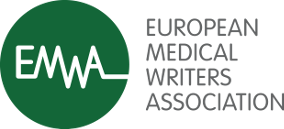Regulatory News - September
EMA’s annual report 2019 available.
The European Medicines Agency’s annual report 2019 is now available on the Agency’s website. For the first time, the report is available in a digital version. You can navigate through the digital content and explore certain topics in more depth, for example through interviews and short videos. The digital version also includes an interactive timeline of the Agency’s main activities in 2019. The first part of the report draws attention to some of the Agency’s main initiatives and challenges, including the successful relocation to Amsterdam, the development and finalisation of the ‘regulatory science strategy to 2025’, the recommendations developed by EMA and national competent authorities on big data in medicines regulation and the response to the discovery of nitrosamine impurities in medicines. The second part is dedicated to key figures, including core statistics that summarise the main outcomes of EMA’s regulatory procedures and activities, as well as trends and changes observed in recent years. More statistical information about EMA can be found in a print-ready version in pdf format that is published alongside the digital annual report.
EMA’s virtual workshop on benefit-risk of medicines used during pregnancy and breast-feeding on 22 September 2020.
Medicine use in pregnancy is common for treating acute as well as chronic disorders. This includes use while the woman does not yet know she is pregnant, and treatments for conditions that can be pregnancy-specific, worsened by pregnancy, or require continued medication during pregnancy. In Europe, very few medicines are licensed explicitly for use in pregnancy and breastfeeding. This is due to the limited understanding of benefits and risks to mother and child and how they should be balanced. It is EMA’s ambition that in the medium- to long term, women should have sufficient information, provided appropriately, to enable decision making on their medical treatment, given their (plans for) pregnancy or given they wish to breastfeed their baby. The PCWP and HCPWP would like to provide an opportunity for their members and the wider stakeholder community to contribute towards developing and implementing EMA’s strategy for developing better information regarding benefits and risks of medicines in pregnancy and breastfeeding, and to encourage a discussion on how to progress towards obtaining evidence on medicine utilisation and safety for this population. The workshop will be broadcast live. You can follow the broadcast available on the ‘Live broadcast' section on the event page on the day of the event. We will ask for audience participation using an interactive polling platform, through which participants will be asked their views on a range of issues around this topic. A video recording will be available after the event. Further information, registration form, agenda, and link to the live broadcast are available here.
Questions and answers on adverse event reporting in for veterinary medicine.
This question and answer document on adverse event reporting was originally developed following the Committee for Medicinal Products for Veterinary Use Pharmacovigilance Working Party (PhVWP-V) interested parties meeting on implementation of Volume 9B of The Rules Governing Medicinal Products in the European Union – Guidelines on Pharmacovigilance for Medicinal Products for Veterinary Use held on 26 September 2012. The document aims to facilitate the understanding of the guidance in Volume 9B and to strengthen and harmonise the approach to adverse event reporting in veterinary medicine. The document was updated in July 2020 to include question 10 on identifiable sources for adverse events reported in social media.
FDA’s Risk Evaluation and Mitigation Strategies: Modifications and Revisions; Guidance for Industry.
This guidance provides information on how the FDA defines the types of changes to approved risk evaluation and mitigation strategies (REMS), how application holders should submit changes to an approved REMS, and how the FDA will process submissions from application holders for changes to REMS. Specifically, this guidance provides information, as described in section 505-1(h) of the Federal Food, Drug, and Cosmetic Act (FD&C Act), on what types of changes to REMS will be considered modifications of the REMS and what types of changes will be considered revisions of the REMS (changes that may be implemented following notification to the FDA).

